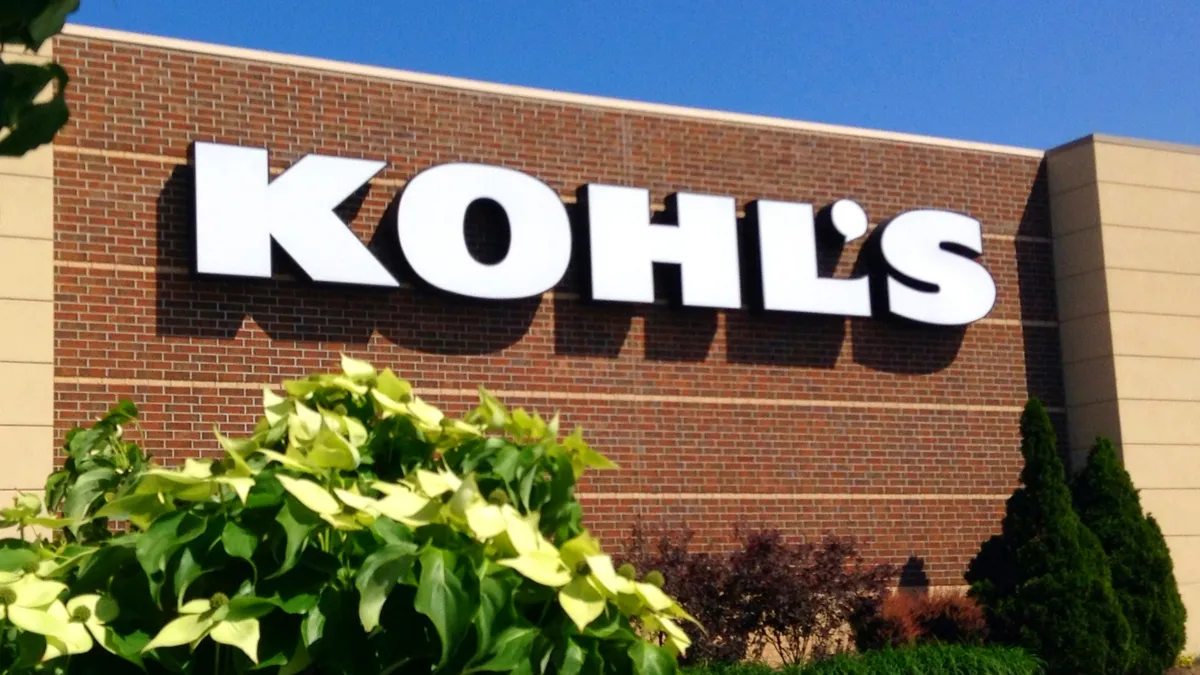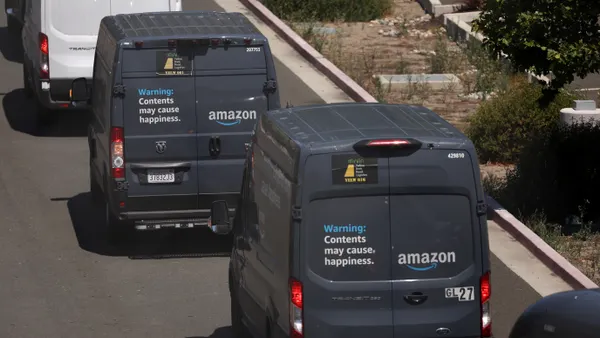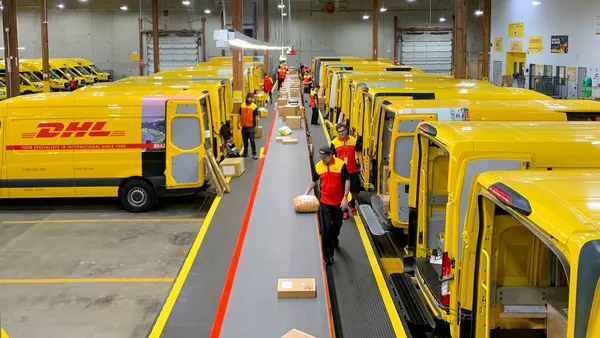Dive Brief:
- Labor was Amazon's "primary capacity constraint" in its most recent quarter, forcing the company to redirect inventory to fulfillment centers with enough employees to handle the products, CFO Brian Olsavsky said on its Q3 earnings call.
- Less-optimal inventory placement meant longer and pricier transit routes for Amazon. The company expects to face added costs of $2 billion in labor inflation and $2 billion in operational disruption, mainly tied to higher transportation costs, in Q4. But the company sees itself as a "shock absorber" of these higher costs so customers and sellers aren't impacted currently, Olsavsky said.
- "In short, our operations are normally well-staffed and optimized to be in-stock and to deliver to customers in one or two days," he said. "Labor shortages and supply chain disruptions upset this balance and resulted in additional costs to ensure that we continue to maintain our service levels to customers."
Dive Insight:
Amazon and other warehouse employers are boosting wages, introducing sign-on bonuses and offering other incentives to draw in potential workers. But higher wages haven't been a cure-all for many employers.
FedEx also had to divert packages in its Ground network to get around its labor crunch. Some companies are leaning more on automation to handle redundant tasks.
The holidays are expected to exacerbate these worker deficits. Nine in 10 supply chain leaders said they need to increase hiring to meet peak season demand, according to a GlobalTranz and Edelman survey from August. Amazon needs 150,000 new workers for its holiday operations.
"As we shift into Q4, we're heads down, focused on delivering a great experience for our customers this holiday season," Olsavsky said. "We are committed to make the necessary investments in both people and capacity to bring more items in-stock and to deliver them quickly to customers."
Other aspects of Amazon's supply chain beyond labor are in better shape. The company is back to having "more normal Q4 fulfillment capacity" after running at near 100% capacity last year, according to Olsavsky. More open capacity allows Amazon's network to better handle swings in volume, a common occurrence ahead of holiday delivery cutoff times.
Earlier this week, Amazon highlighted other investments to keep peak season service levels high in the face of global supply chain challenges.
"We've increased ports of entry across our network by 50%, doubled our container processing capacity, and expanded our ocean freight carrier network partnerships to secure committed capacity into critical ports within our network," said John Felton, Amazon senior vice president of global delivery services, in a company blog post.
The company also invested in technology to better forecast product demand and is expanding its Amazon Air Cargo fleet to more than 85 aircraft, "ensuring enough capacity to transport customer packages across longer distances in shorter timeframes all season long," Felton said.















